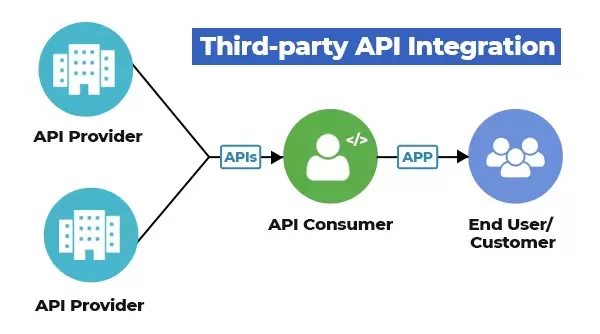As modern commerce trends towards more digital offerings, there is an increasing reliance on APIs to power the interactions between front-end applications and back-end services. An API-first approach offers a flexible way to support headless commerce by allowing developers to use fewer lines of code when creating web or mobile storefronts for customers.
Utilizing APIs gives teams greater agility in building their customer experience while providing access to continually updated data from numerous sources. This article will discuss how businesses can leverage an API-first model to create decentralized and united experiences that drive increased engagement and conversions.
Understanding API-First Commerce and Its Benefits
API-First Commerce is a powerful approach to e-commerce development that places the application programming interface (API) at the forefront of a business’s digital operations. With API-First Commerce, businesses prioritize the development of APIs that can be used to access and manipulate data across various systems and platforms. By adopting this approach, businesses gain various benefits, including increased agility, flexibility, and scalability.
With the API serving as a central hub for data sharing and communication, businesses can more easily integrate new technologies and services into their operations, streamlining their workflows and driving greater efficiency. API-First Commerce helps businesses meet their customers’ rapidly evolving demands, providing them with the seamless, personalized experiences they have come to expect. API-First Commerce is a powerful tool for businesses looking to stay ahead of the curve in an ever-changing digital landscape.
How to Choose the Right APIs for Your Site
When building a headless commerce solution, selecting the right APIs for your business is vital. Different APIs have different capabilities, and you should consider which ones best suit your needs. For example, if you want to integrate with payment gateways such as Stripe or PayPal, you will need to find an API supporting these services. It is also essential to ensure that your APIs are secure and reliable. Research the company behind the API and see what other customers have said about their experience using it.
Finally, be sure to test out any APIs before rolling them out into production so that you can address any potential issues beforehand. E-commerce microservices can be a powerful tool when used correctly, and it is essential to take the time to select the right ones for your business.
Best Practices for Setting Up an API-First Approach
Once you have selected the right APIs for your needs, there are several best practices that you should follow to ensure a successful implementation. Firstly, it is vital to create clear documentation outlining the purpose and functionality of each API. It will help developers understand how to use the APIs when building their applications.
It would help if you also considered setting up a version control system to manage changes made to your API. It will prevent conflicts between different versions of the same service and enable teams to quickly roll back any necessary changes. Finally, you should keep an eye on your APIs’ performance and ensure they are running smoothly at all times.
Integrating Other Systems into Your Stack Through APIs
API-First Commerce also enables businesses to more easily integrate third-party systems into their stack. For example, connect your e-commerce platform with a customer relationship management (CRM) system or analytics tool to gain deeper insights into your operations. By using APIs, businesses can quickly and securely share data between these two services, providing a seamless experience for customers.
In addition, APIs make it possible for organizations to build out customized integrations that address the specific needs of their business. It allows teams to tailor their technology stack according to their own unique requirements, ensuring they always have access to the tools and services they need.
Utilizing Third-Party APIs to Enhance Your Storefront Experience
Third-party APIs can also strengthen your customer experience by providing additional features and data access. For example, you can integrate a product review API so customers can quickly leave feedback about the items they purchased. It can help businesses understand which products are performing well and make more informed decisions about their product offerings in the future.
Similarly, third-party APIs can provide personalized recommendations based on customers’ previous purchases or browsing habits, helping them discover new products that they may find interesting. By leveraging these powerful tools with an API-first approach, businesses can create a unified, frictionless shopping experience that boosts engagement and drives conversions.
Leverage Existing Data with APIs to Create Custom Solutions
Finally, businesses can leverage existing data to create custom solutions that meet their needs. For example, you can integrate a customer loyalty program API into your e-commerce platform. By doing so, you can give customers points or discounts as rewards for their continued support of your business.
Similarly, you can use APIs to customize shipping or delivery options based on the customer’s location and preferences. By utilizing existing data in combination with an API-first approach, businesses can develop powerful solutions that drive increased engagement and conversions across all channels.
Conclusion
Leveraging APIs in an API-First Commerce model provides businesses numerous benefits, including increased agility, flexibility and scalability. With the proper selection of APIs, organizations can integrate third-party services, create custom solutions and enhance their customer experience. By adhering to best practices like version control and performance monitoring, businesses can ensure a successful API-First Commerce implementation.









